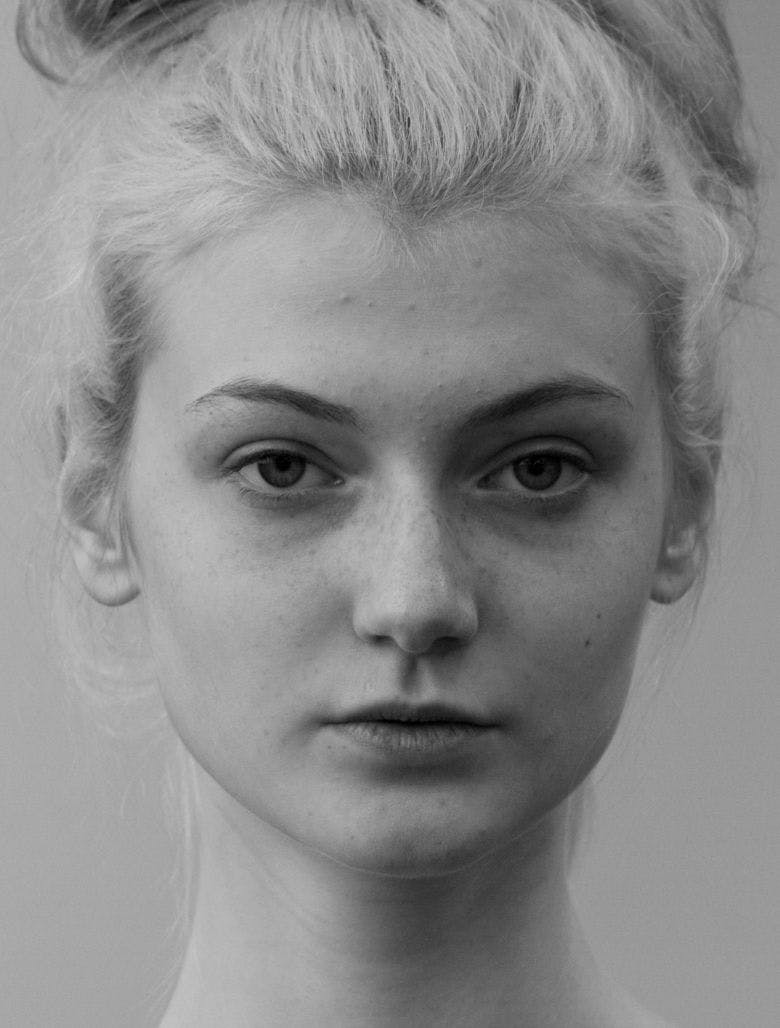Face Mapping: Deciphering Your Spots Based On Locations
7 minutes read
Every one of us suffers from all sorts of skin inflammations: acne, cracked lips, or dark circles. However, pinpointing what causes them can be puzzling as many factors come into play from environmental stressors, lifestyle choices and specific health conditions.
However, many experts swear by an ancient Chinese technique called face mapping, which helps us decipher what a spot or a skin inflammation means based on its location.
Beauty Daily speaks to celeb-favourite and world-renowned naturopathic doctor Nigma Talib to explain everything you need to know about face mapping: from acne to treating it from the inside out.
What is face mapping?
“In traditional Chinese mapping, energy, qi, flows through the body via a series of channels called meridians. If these are in balance, you remain in good health; if the channels become blocked or imbalanced, health symptoms emerge, and any meridians that are disturbed because of diet, lifestyle, stress levels and hormone changes show outward signs on the face,” Los Angeles and London–based celeb-favourite naturopathic doctor Nigma Talib, ND, tells Beauty Daily.
According to Traditional Chinese Medicine (TCM), face mapping reveals the person’s skin state as a reflection of one’s inner health status. Face mapping also helps understand why you break out in certain areas.
There is little scientific basis for Chinese face mapping and research is limited. However, the technique is based on 3,000 years of observation, and some clinicians do see some patterns in patients with spots in specific places showing other health conditions.
Some medical practitioners don’t believe in it at all, claiming that acne mainly appears on the face due to overproduction of sebum among a host of other reasons. Here’s a list of common causes of acne, according to dermatologists.
Dr Talib, best-selling author of Reverse the Signs of Ageing, believes that each part of the face is related to a specific organ system: “Any disharmony inside the body will show up on the outside. It can manifest in different ways such as puffiness, excess lines, colour changes, breakouts or zits, itchiness, dull skin, or flaky patches in these areas.”
How is Face Mapping Done?

If you keep getting a blemish or discolouration in the same area, it’s most likely connected to organ health issues. Your body may be trying to tell you that a part of your system needs help. So, listen up!
Here’s an expert guide to understanding the location of your skin inflammations as per Dr Talib. She does a rundown of each inflammation or acne hotspot and its meaning.
The forehead
The forehead is associated with the process of digestion. It is a common area to wrinkle as we age, but if your diet and digestion are poor, the lines on the forehead will be deeper and can even appear on younger skin.
“The forehead is further divided into three sections. The upper part of the forehead is associated with the bladder meridian, the middle with the stomach and digestion, and the lower forehead with the small intestine,” Dr Talib explains.
Read next: Everything you need to know about the gut-skin connection
Between the eyes
This area is associated with the liver meridian and is why people who drink wine find blemishes manifesting in this area.
“If you’re overindulging in alcohol, you may notice vertical lines, acne/blemishes, or a reddening develop here,” Dr Talib says. “I find it’s also common in people who have a dairy intolerance or consume a lot of processed sugar. I often call this area the ‘wine and dine’ area as it’s so closely linked to what we eat and drink”.
Read next: Does Alcohol Age Your Skin? The Experts Weigh In
The brows
Are you finding your eyebrow hair extra-long and wiry? This could be a sign that you’re overly stressed, and your adrenal glands scream for help.
According to John Hopkins Medicine, adrenal glands produce hormones that help regulate metabolism, immune system, blood pressure, response to stress and other essential functions.
“I am seeing more and more women with adrenal and thyroid issues caused by hormonal disruptions and stressful lives, and these commonly show up via changes in the eyebrows,” Dr Talib says.
Too much sugar can also show up in the brows as it causes insulin imbalances, which overburden the adrenal glands.
Read next: Here’s What Eating Too Much Sugar Does To Your Skin
The eyes
Dark circles under their eyes may be due to genetics, poor sleep, bad blood circulation, food intolerances, hay fever, or even iron deficiency anaemia.
However, in TCM, this area relates to the kidneys, and a darkening may indicate that your kidneys are overworking at eliminating toxins from the body.
“Alcohol plays a role here, but other things that can strain the kidneys are pesticides, dehydration, or excessive levels of salt/sodium in the diet. Puffiness around the eyes is a sign that you’re holding on to too much fluid—this could be because you’re not drinking enough water or consuming too much salt or sugar (both of which encourage fluid retention). Also, check your energy levels—blue circles under the eyes are a common sign of tiredness and exhaustion.”
Read next: What causes dark circles under the eyes?
The nose
Is pesky blackheads your problem? You are not alone: up to 20% of adults have blackheads.
In TCM, it suggests you probably have poor digestion, specifically linked to low stomach acid levels.
Dr Talib explains that if your nose is red or has lots of broken capillaries, this can be caused by drinking too many hot drinks, eating excessive spicy food, or consuming too much alcohol. All of these cause the capillaries to dilate, and if this happens too frequently, they can remain enlarged. Yikes!
Read next: Sebaceous Filaments vs Blackheads? What’s The Difference?
The cheeks
In TCM, your cheek area is related to your lungs. If you get redness, irritation, or congestion in that area, you are also likely to be suffering from sinus issues, asthma or a chronic cough.
Try cutting back on your dairy intake if you notice paleness or excessive colour in your cheeks or develop a rough texture and/or breakouts in this area. Pale cheeks can also be linked to low iron levels. If you also suffer from low energy, perhaps add a source of iron, such as red meat or dark green leafy vegetables, to your diet.
Read next: Nutritionist-Approved Guide To Clean Eating
The lips
If constant dry and cracking lips is your dilemma all year round, it might not be the UK’s cold air to blame; it may have something to do with your stomach.
Dr Talib explains, “If you overload your stomach with irritating foods or processed foods, it will start to break down and lose its normal level of acidity and this will show up on your lips.”
“I’d look carefully for any food intolerances or sensitivities in anyone who regularly suffers from this problem. Cracks at the side of the mouth are a very common sign of low B vitamin levels—this could be because your diet is poor or because your levels of gut bacteria that help make B vitamins are imbalanced.
Finally, cracked, flaking lips can also show a deficiency in essential fatty acids, which help maintain healthy cell membranes and associated healthy moisture levels in the body. Increase your intake of nuts, seeds, avocados, and oily fish to help counteract this.”.
Read next: How To Get Rid Of Dry Lips, According To Experts
The chin and jawline
Experts say the sides of the chin, along the jawline, are associated with the ovaries and the reproductive organs. Outbreaks around this area are often triggered by hormonal changes and it’s the most common place women get blemishes before their period.
“The middle of the chin, however, reflects bowel health, specifically how well you are eliminating toxins. Congestion here could indicate chronic constipation or incomplete evacuation creating chaos in the gut.” Dr Talib explains.
She advises: “Try drinking more water and increasing sources of soluble fibre in your diet to get things moving more efficiently. Some people also find that overdoing gluten can cause slow motility and affect how well your bowels move. Cut back and you might find acne or lines in this area disappear.”
What to do next
Spotted blemishes or skin inflammation in these areas? A certified TCM practitioner like Dr Talib recommends a 360 holistic approach to changing aspects of your diet or lifestyle.
However, even though skincare experts (dermatologists, physicians, facialists, or nutritionists) may have varying and opposing opinions when it comes to face mapping, they agree that some factors affecting skin health come from within.
Here’s How To Adopt A Holistic Approach If You Want Healthier Skin In 2022.
Sign up for our newsletter
We will keep you in the loop for special offers, exclusive gifts and product news.

